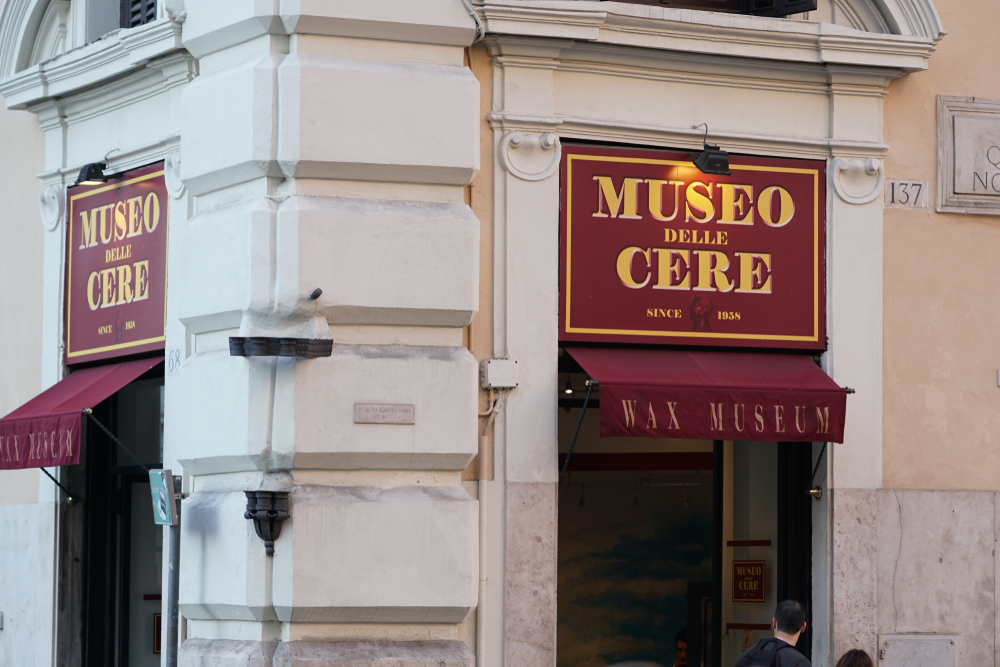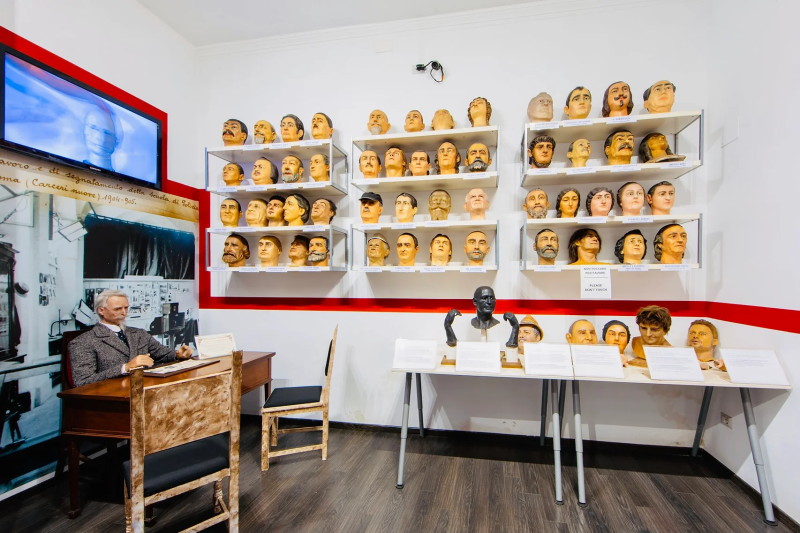There’s no place like Rome. But sometimes, amid the chaos and crowds and crushing history, we all need a little break from the serious stuff.
Spending my most recent birthday at the Eternal City’s wax museum was not my original plan. But when an artist friend suggested it on a whim, I took the bait. Neither of us had any particular agenda in mind — spontaneity was the order of the day — and as it turned out, rubbing elbows with the likes of Julius Caesar, Leonardo da Vinci, Luciano Pavarotti, Albert Einstein and Elvis Presley was the perfect laugh-filled way to celebrate. No, it’s nothing close to a “must-see,” but if you’re looking for some harmless low-brow fun in what can be a high-stress city, the Museo delle Cere, as it’s known in Italian, works like a charm.
Waxing poetic

The wacky space is a cartoon-like temple of history, mythology and pop culture founded by circus entrepreneur Fernando Canini, who was inspired to bring a wax museum to Romans after experiencing others in Paris (Grévin) and London (Madame Tussaud). In 1958, Canini’s dream became a reality; today, his grandson, also named Fernando Canini, still runs the space.
A novelty in Italy when it opened, the museum occupies the ground floor of the 14th-century Palazzo Colonna just off Piazza Venezia. Over a maze of themed rooms, it showcases more than 100 life-size statues and disemboweled heads of ancient emperors, kings, popes, inventors, Renaissance poets, composers and artists, in addition to a host of contemporary Italian and international celebrities. The groupings are laid out in a thematic but not exactly chronological timeline exploring the dinosaur age to antiquity to present day.
As you pass through galleries, you’re welcome to snap a selfie with famous faces like like Cleopatra, Napoleon Bonaparte, Roberto Benigni, Freddie Mercury, George Clooney and, yes, even Donald Trump.
It’s an offbeat, oddly organized portal to the past, a spoof of the present, and all in all, a real hoot.
Museo delle cere / Piazza dei Santi Apostoli 68A, Rome / Open daily / Website
Other wax museums in Italy
Below are several other wax museums in Italy offering a quirky break from more typical (read: more serious) Italian cultural institutions.
Instruments of Torture and Wax Museum, San Marino
Founded in 1966, the Museo delle cere e strumenti di tortura is home to a plethora of wax statues depicting historical moments like the assassination of Abraham Lincoln, the meeting between Benito Mussolini and Adolf Hitler, red-shirted Giuseppe Garibaldi at his wife’s deathbed, and Jacqueline Kennedy’s audience with Pope John XXIII in 1962.
In adjacent rooms, exhibits delve into Europe’s dark past through a display of excruciating instruments of torment. Among the macabre collection are guillotines, laminated collars, penal baths and vices. (Unlike the other spaces on this list, this museum isn’t recommended for small children. Note, too, that this is a separate entity from the Museo della Tortura circuit found around various towns in Tuscany.)
Museo delle cere e strumenti di tortura / Via Lapicidi Marini 17, Republic of San Marino / Website
Wax Museum of Piacenza, Grazzano Visconti
Get to know Grazzano Visconti, a charming village near the city of Piacenza in Emilia-Romagna, in this amusing tribute to local life in the form of a wax museum. Rather than Hollywood VIPs and international politicians, local dignitaries or figures with loosely defined ties to Piacenza are featured, including Hannibal (the Carthaginian general and statesman famous for a standoff battle of Piacenza in 218 BCE); Julius Caesar’s Piacenza-born third wife Calpurnia; opera composer Giuseppe Verdi; and Maria Luigia of Austria (Napoleon’s second wife, who served as Duchess of Piacenza from around 1814 until her death in 1847).
The space is brought to life with help from special effects artists and costume designers such as Atélier Nicolao, who created costumes for films such as Marco Polo, The Merchant of Venice and Farinelli.
Museo delle cere di Piacenza / Via Roma 10, Grazzano Visconti / Website













